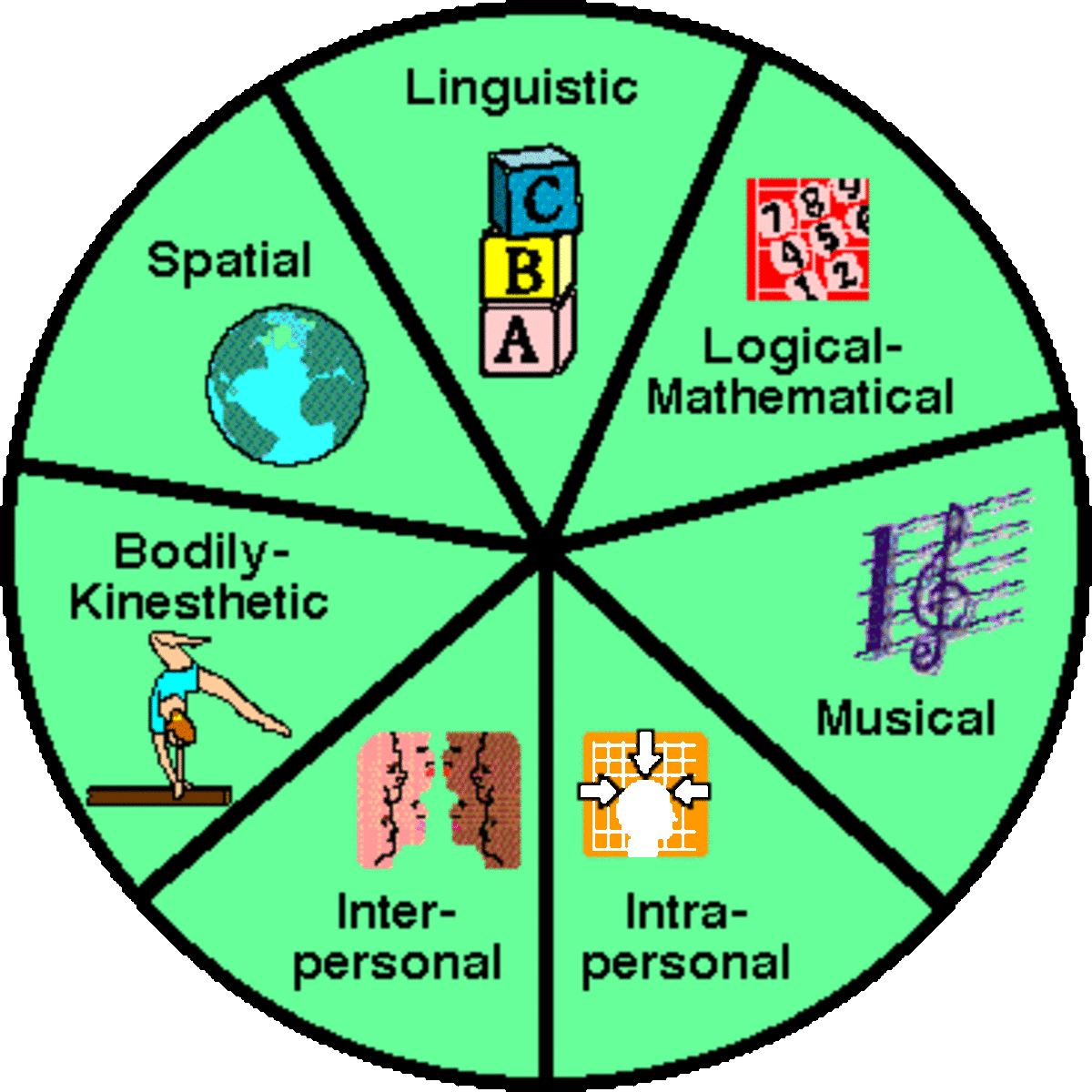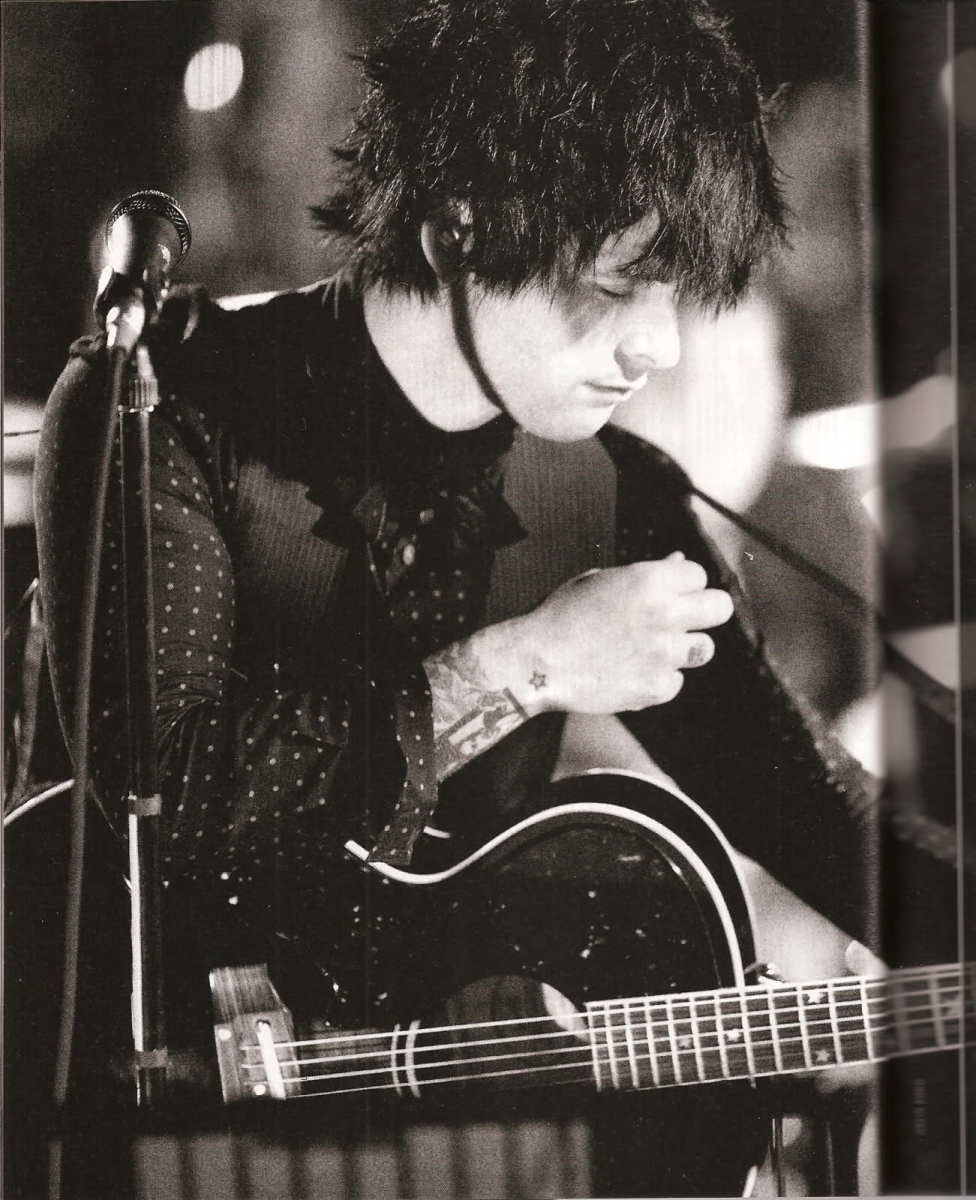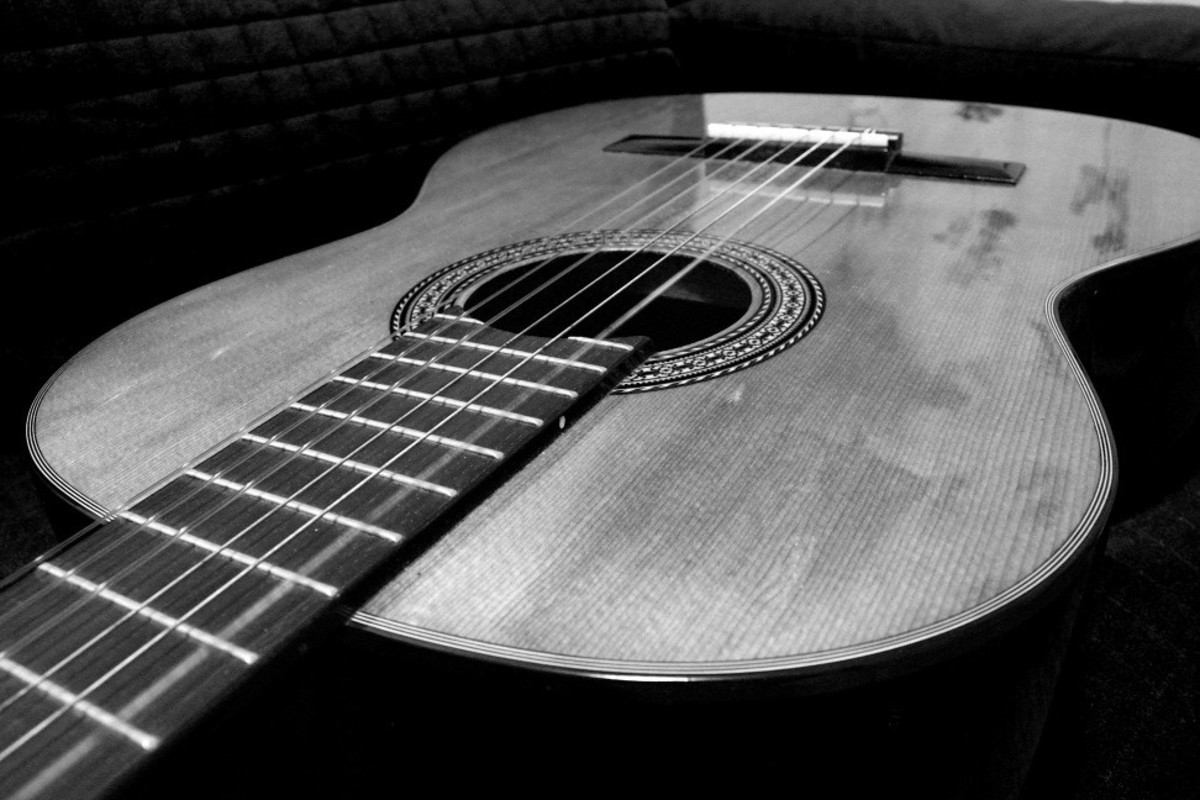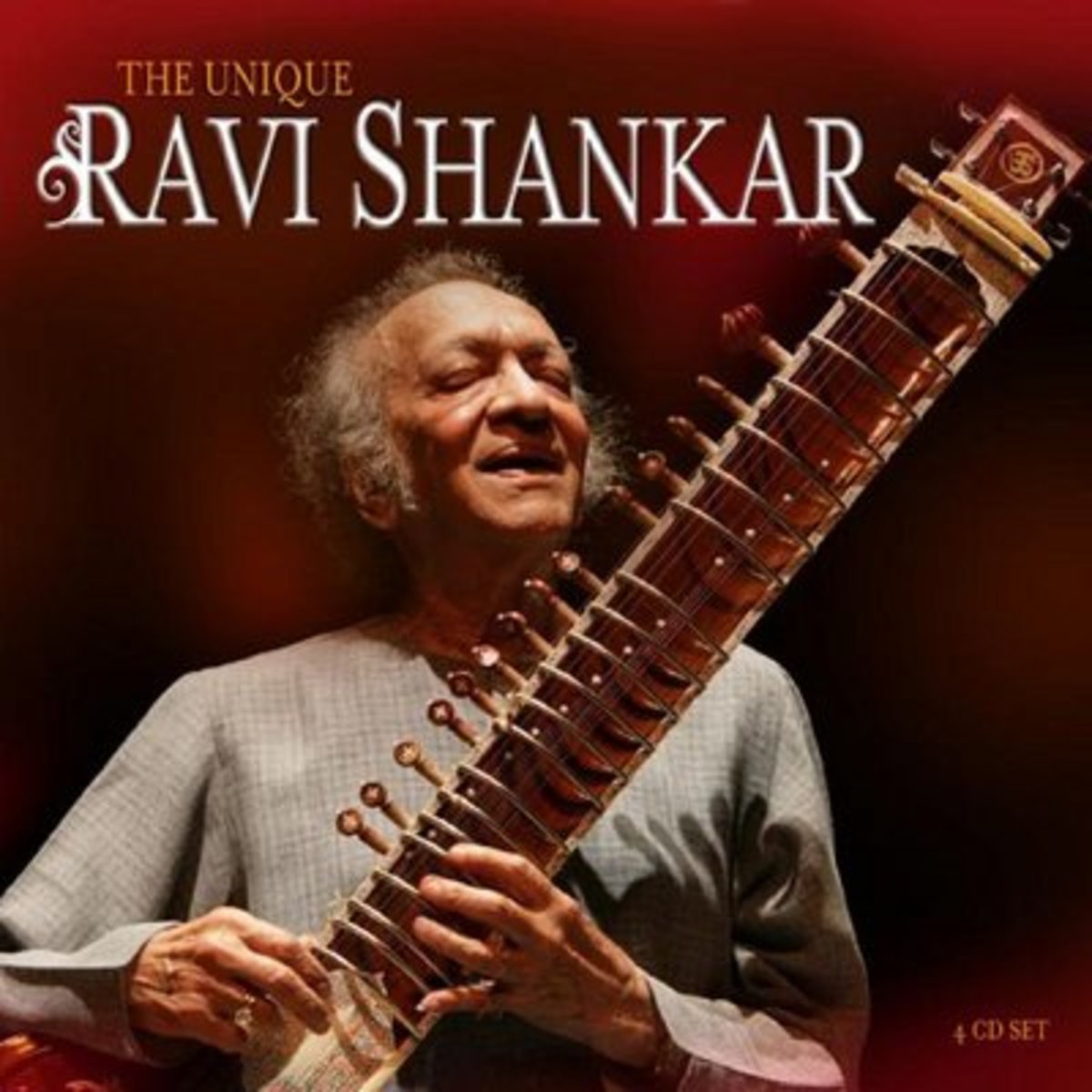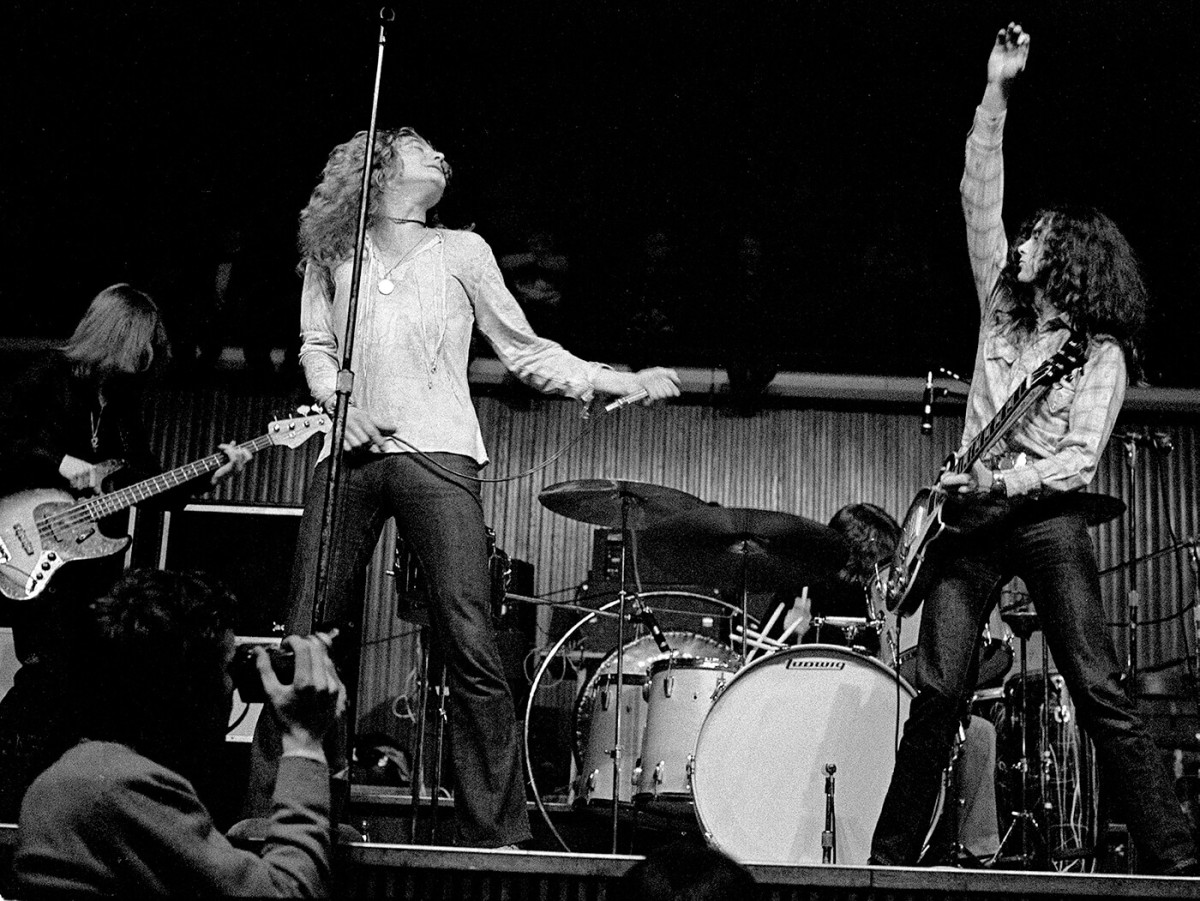Help Children Read Rhythmic Notation in Music
Reflections on My Personal Experience
To anyone who has read my other articles on Reading Rhythm in Music, it may come as something of a surprise to discover my personal history with learning to read rhythmic notation as a child and teen.
In those early years, I had two different private piano teachers: the first when I was between the ages of 8 and 11, and the other between the ages of 11 and 18. Their methods of teaching rhythm (and other aspects of musicianship) were noticeably different.
Two Teachers, Two Approaches
The first, Miss E, discussed rhythm occasionally. I remember that she would try to make me hold half notes longer than I wanted to. I understood that they were longer than quarter notes, and that eighth notes were faster and shorter, but I had no clear concept of the ratio between them. I'm still amazed that I actually learned to play music while I studied with her. When I look back now at the music she assigned to me, I am startled to see how fast she moved me along to new concepts and skills. Don't get me wrong – she was a terrific teacher in many ways. Numbers of her students went on to professional careers in music. But I didn't learn a great deal about rhythm from her.
The second, Miss P, was rigorously strict about rhythm. With every new piece, we were required to first learn the music "cut and dried" – that is, focusing solely on the notes, fingering, and time. When those aspects had been mastered, we could begin learning the interpretation – the correct tempo, touch, dynamics, phrasing, pedaling, rubato, and all elements that are used to express the "feeling" of the music. In the cut-and-dried stage she required her students to count out loud so that she could hear (and correct!) us, and I hated that at first. In fact, one of my friends changed to a different teacher because she hated Miss P's method so much. But I grew to appreciate the exactness that I learned, and ever since then I have been extremely grateful for her strictness about rhythm. She too had numbers of students who went on to professional careers in music.
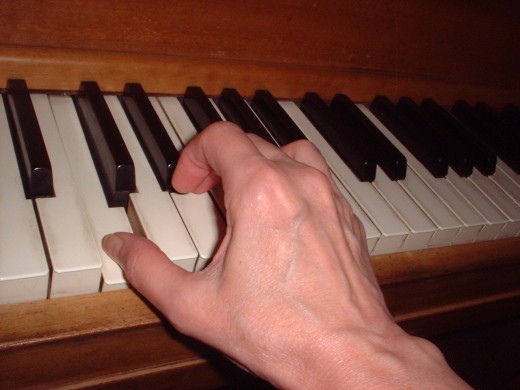
What Brought Success?
I don't know – and perhaps never will – whether it was Miss P's methods and strictness that helped me to develop the ability to understand and interpret rhythmic notation, or whether I was simply not ready to learn it when I was younger and studying with Miss E. Whatever the case, my own experience has influenced the way I approach the teaching of rhythm with my students. Primarily, I don't obsess if it takes a pretty long time for an understanding of the meaning of notation to develop. That doesn't mean that I neglect it – far from it! But I try to find whatever exercises or drills will best help the specific student to understand and internalize the meaning of the rhythmic notation, even if I have to make up a new method as I go along. And I don't start hounding a student mercilessly (speaking figuratively here) about rhythm until: they have studied with me for a relatively long time; I have developed an awareness of what they have heard and learned from me; I understand something of the way they think and process information; and I have some kind of rapport with them.
Having said all that, I would like to offer a few suggestions for helping students grasp the meaning of the musical notation of rhythm, in addition to the suggestions that I have offered in other articles.
Names as Aids to Rhythm
1) Ask the student the names of some of their friends. Chant the names rhythmically, establishing a beat. Keep in mind that the rhythm will sound somewhat different to a new learner, if the speed of speaking the name is very different from everyday speech. Write out (in the student's notebook or on the inside cover of their lesson book) the correct way to notate the names, based on the kinds of notes the student should know at that point.
After demonstrating the correlation between familiar names and rhythmic notation, find some samples within the student's music where the names can be applied as aids to help in understanding the rhythm – preferably spots that are particularly problematic.
Some names will be much easier to notate than others. Skip the ones that don't work well. Just for the event that all of the student's suggested names are inadequate examples, plan ahead with some names of your own to suggest. Below are a few that can be notated in different ways, depending on what the student already knows, what they are learning, and (!) the way they and you pronounce the names. (Plan ahead if you intend to use this tip, because individual pronunciations can affect its outcome and effectiveness.)
2) An adjunct to this first suggestion would be to use A.A. Milne's rhyme "James James Morrison Morrison Weatherby George Dupree" to demonstrate the correlation between names and rhythmic notation. A disadvantage to this poem is the fact that it is in a strongly triple meter, making it harder to adapt to duple meter than some friends' names might be.
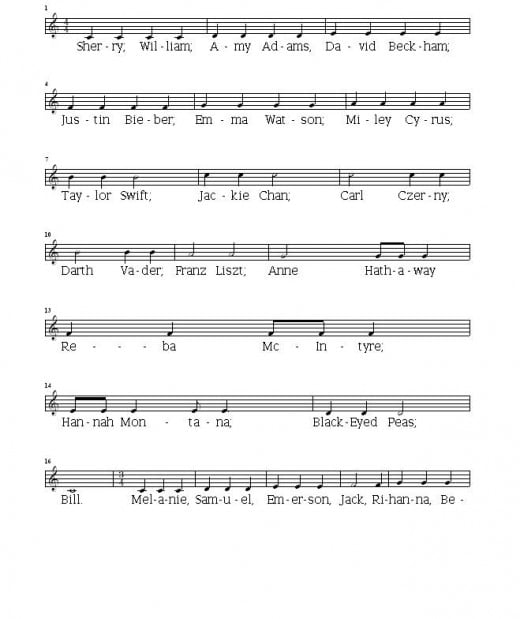
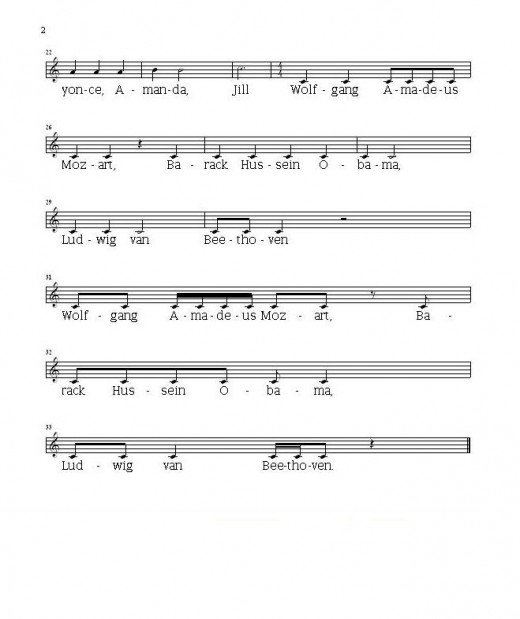
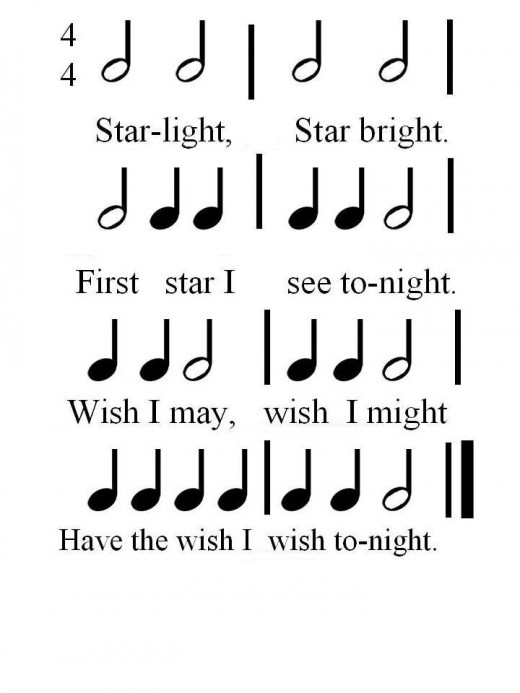
Familiar Rhymes
3) Follow a similar procedure with other familiar rhymes. Students today may not be familiar with nursery rhymes from past decades, and so it will help to know in advance (perhaps by contact with the parents) what kiddie songs or rhymes the student might know. Just as an example, see this children's rhyme:
Starlight, Star bright, first star I see tonight,
Wish I may, wish I might have the wish I wish tonight!
4) Similarly, discover whether the student knows any chants for hand-slapping games or jumping rope. Those will probably be very rhythmic and attuned to longer vs. shorter, accented vs. unaccented words and syllables. Although it may not be played anymore, one good example is "Under the Bamboo Tree." It might be fun for some students to learn the routine to play with a friend. Show the student how the chant would be written in standard music notation. Later, the knowledge of the chant can be extended to apply to tricky rhythms in the pieces that are being studied. You can always refer back to the chant by saying, "Remember how we wrote these long (or short) notes in 'Under the Bamboo Tree'? This half note tells us that the note must be held longer – for two beats – just like two hand claps. This eighth note tells us that the note is shorter, like 'the bamboo tree,' at the end."
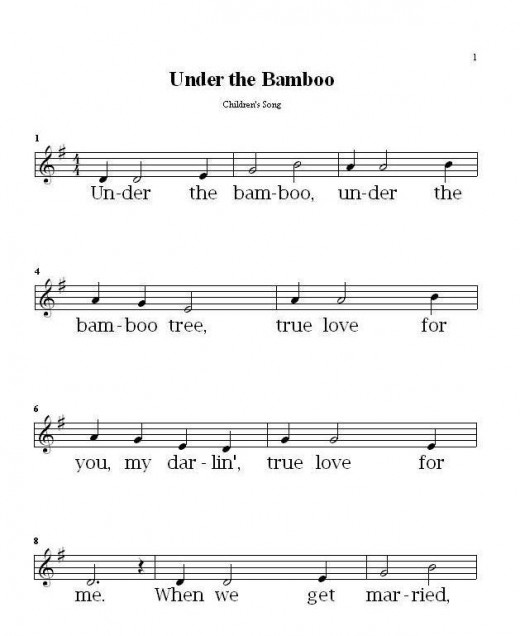
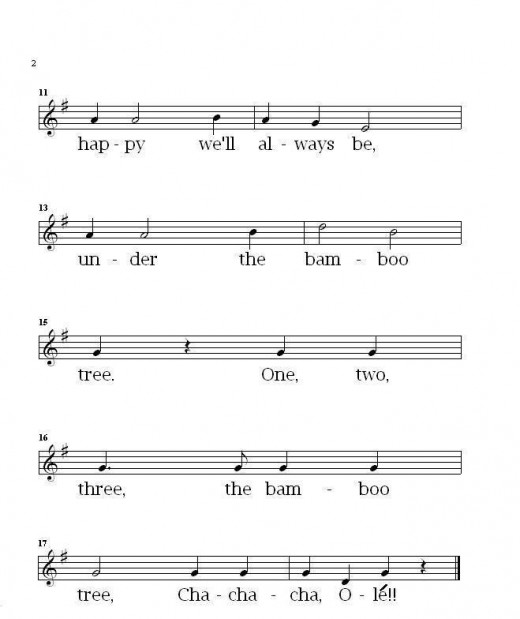
Familiar Music
5) Finally, check in the student's lesson book(s) to see whether there are any familiar songs in which the rhythm has been simplified for the sake of a new learner. Two examples that I have found frequently are "Oh Susanna" and "Ode to Joy." If the student has learned the piece already, review it with them. It is likely that there will be some spots where a dotted quarter plus eighth note pattern (in the original) has been replaced with two quarter notes. Or perhaps an eighth note has been omitted here and there.
Play the piece as it is written in the simplified version, then ask the student if it sounded the same way they have heard it elsewhere. They may be able to point out some spots where "something sounds different." If the student is playing, they may actually automatically adjust the notes to match the way they have heard the music before. When that happens (or if you are playing it yourself as a demonstration) you can note in pencil on the music "the way we would write the notes to make it sound that way." The alterations can be used as reference points for spots in other pieces.
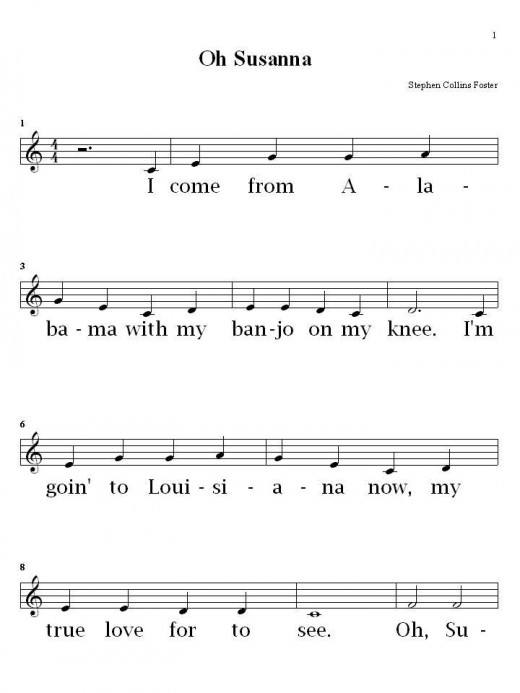
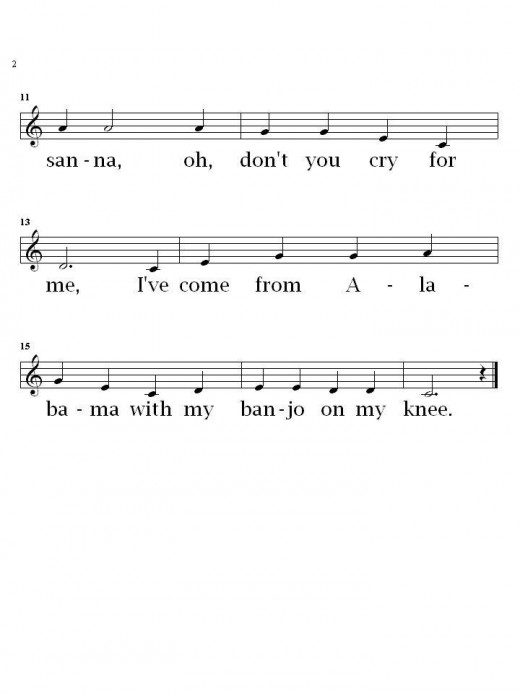
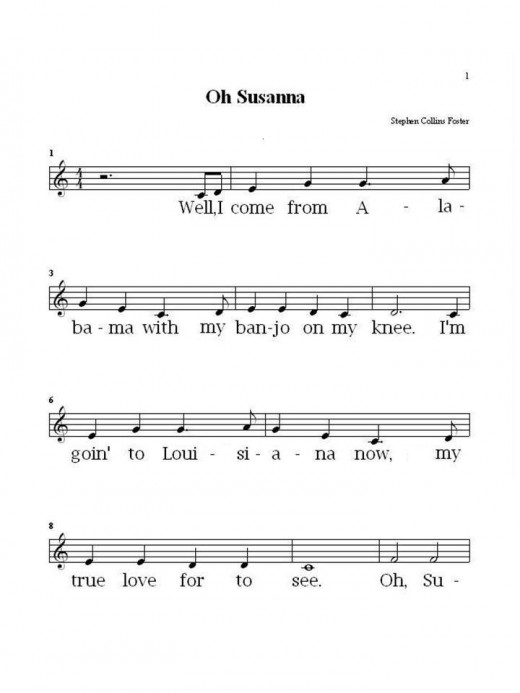
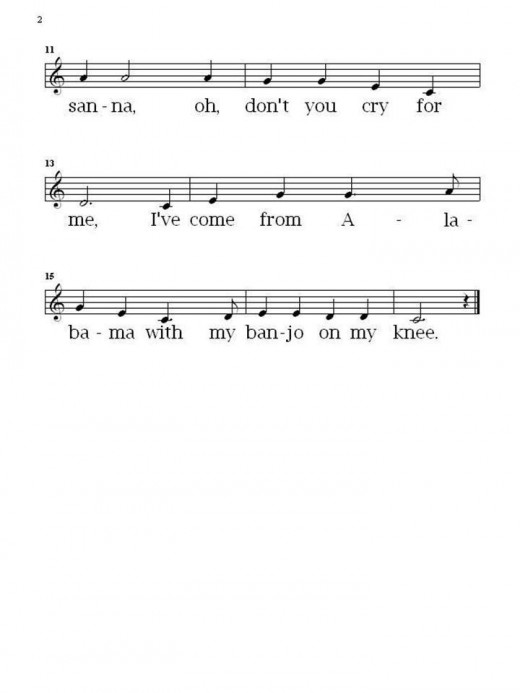
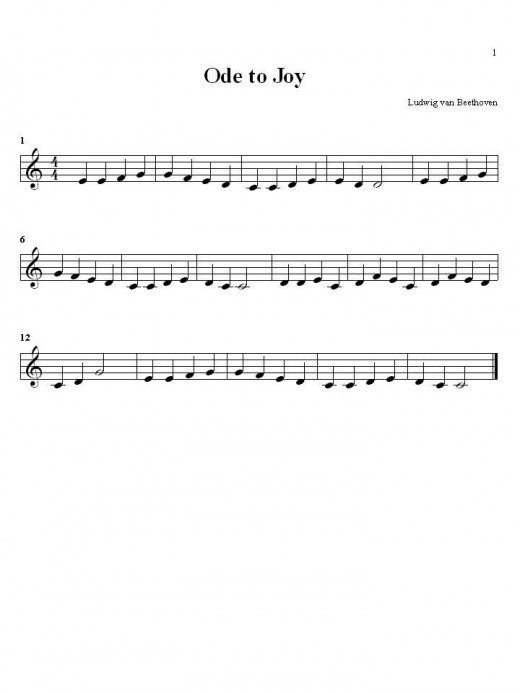
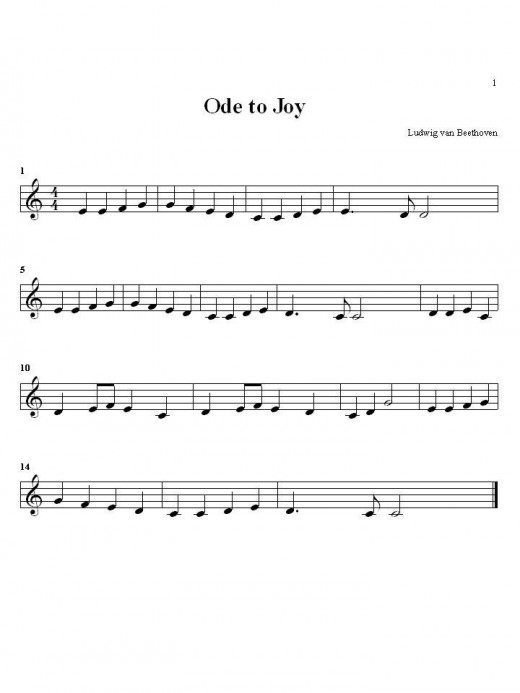
All of these tips represent ways to help the student understand the meaning of rhythmic notation, by applying notation to something that is already familiar or something that can be learned easily for fun. But so far, these tips have to do more with a cognitive understanding than with actual performance. Transferring that understanding adds another skill level, but it can be accomplished – or at least assisted – in several steps.
Transferring Cognition to Performance
If the difficulty level of the piece suggests doing so, allow the student to play each hand independently, and use some of these suggested chants in different spots to help correct any rhythmic difficulties. When each hand is secure, allow the student to play one hand while you play the other. When students are working on coordinating their hands in a given piece, I like to recommend that they practice the piece one phrase (usually 4 or 8 measures) at a time, playing that phrase several times in succession. I also like to recommend that they practice the more difficult sections (which I mark for them) on the days immediately following their lesson, then move to the easier sections later in the week.
During the lesson, another aid for working on the coordination of hands would be to tap the rhythm (of a given passage) with both hands, allowing each hand to tap at the correct time. While doing that (or while the student is playing), I chant in rhythm some words that help to remind the student whose turn it is to play, for example: together (or both), left, right, hold. It helps to chant these words while pointing to the appropriate note, before the student begins to tap, patsch, or play.
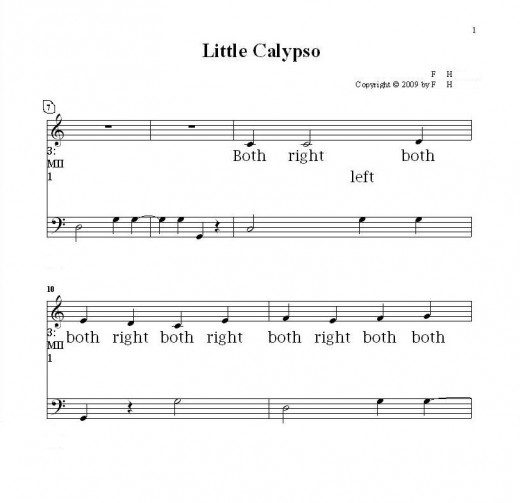
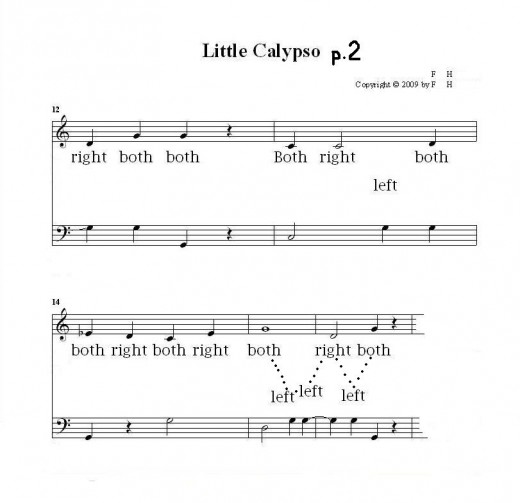
If You Choose One Method Only, and a Final Tip
As I mentioned earlier, I generally try to find what works with a given student. But it can become confusing to shift from one method with one student to a different method with another student. In my articles Reading Rhythm in Music IV and V, I have described several different counting methods that can be used with success.
If I were to choose one and only one method to use with younger students and/or with students who are struggling with rhythm it would be to use the names of the notes as the rhythmic chant to go along with the music (listed as "Method IV"). That runs into trouble when counting for two hands at the same time, if they are rhythmically offset from one another. And it is a method that requires practice on the part of the teacher, since it can involve a form of multi-tasking (pointing to the correct note, saying the name of the note in correct rhythm, while still listening to the student's performance). As students progress, they will benefit by moving towards the traditional counting method involving numbers in sequence. But while they are developing an internal awareness of how pulses and squiggles relate to one another, chanting the names of the notes can be a helpful steppingstone in the process.
One final idea to point out: students may benefit from a reminder that rhythmic difficulties often occur when the music mixes up different values of notes.
Think about how many students are capable of learning the principal theme of "Für Elise" before they have any concept of eighth notes and compound three-four meter. The reason (in addition to the familiarity of the piece) is that the regularity and predictable rhythm of the eighth notes makes it easy to grasp the feel of the music, even before the student knows how to read it.
When a piece of music presents a long succession of quarter notes or half notes, or a predictable pattern that combines both, the student will probably have less trouble with the rhythm. But once the pattern changes – even for one measure only – rhythm may be a stumbling block. Even young students can be taught to look at the music with their eyes first, before playing, to identify spots where they will need to pay extra-close attention to the rhythm or to practice a measure or phrase alone, out of context, before playing the entire piece.

